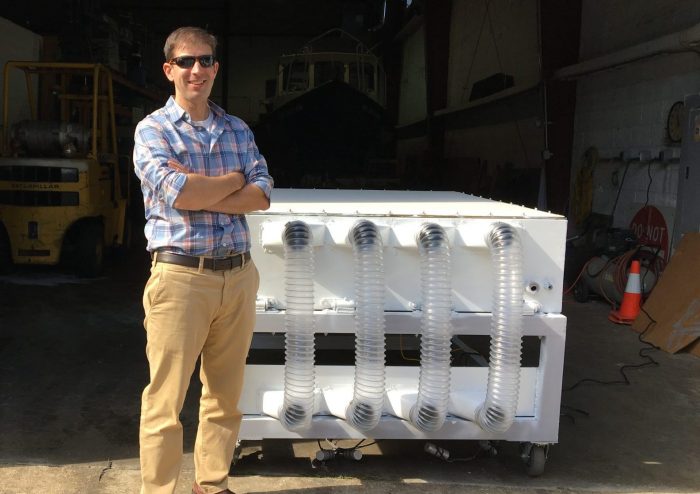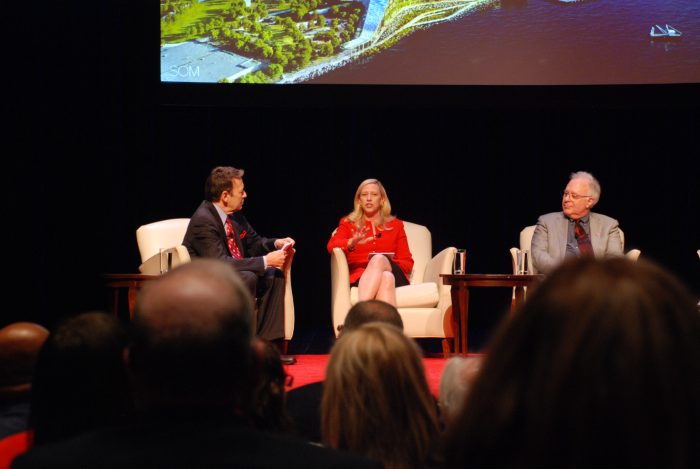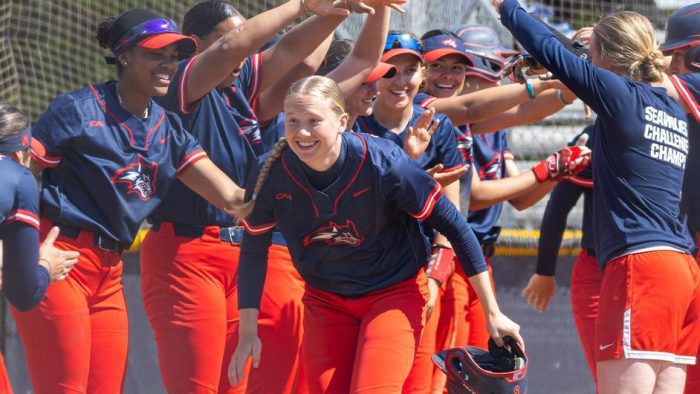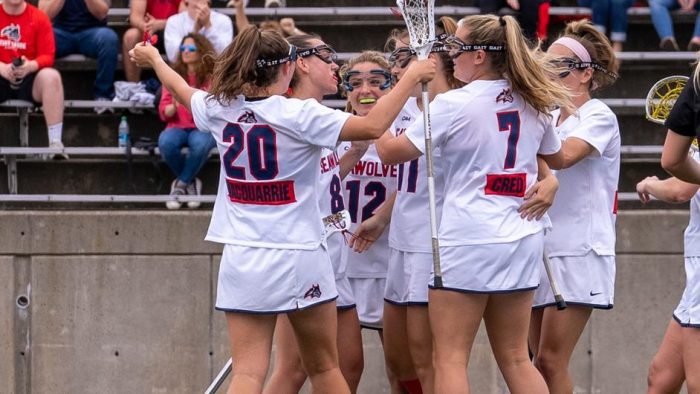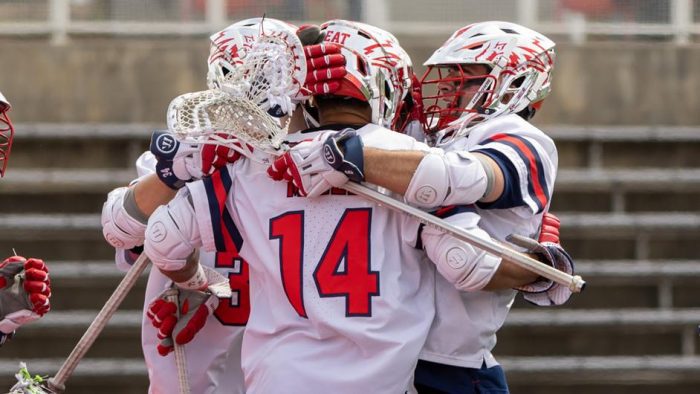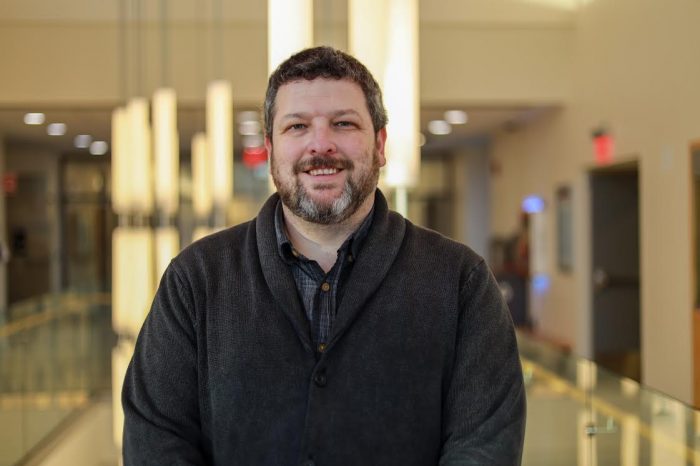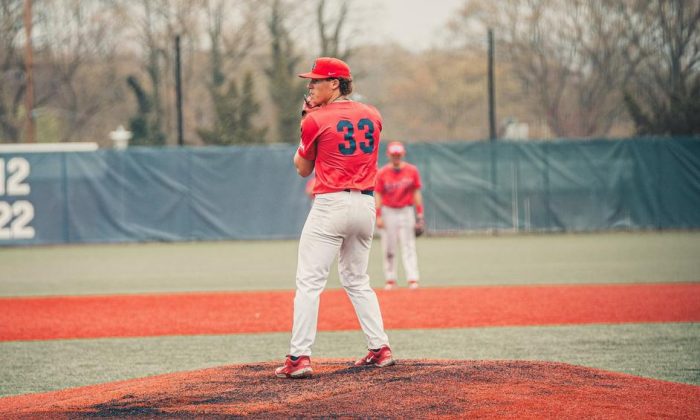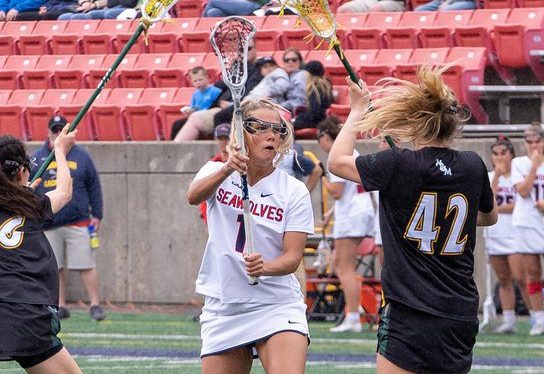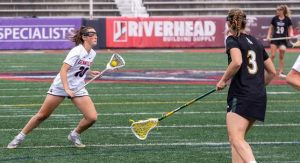By Daniel Dunaief

When he was in elementary school in Hamden, Connecticut, Michael French was several miles away from an event that would shape his life. A tornado touched down, causing extensive damage, knocking out power lines and injuring 40 people. The violent storm was traumatizing, causing him to hide in the closet during routine summer storms.
By the time French attended college at Cornell University, these powerful and potentially devastating storms had become an “interest and fascination,” he said, leading him to major in atmospheric sciences.
After graduating from college, he received an offer from Professor Howard Bluestein at the University of Oklahoma (OU) for a master’s program. A consultant for the movie Twister starring Helen Hunt and Bill Paxton, Bluestein was one of the first to put a weather radar on the back of a truck to collect data in severe storms and tornadoes. French also earned his PhD at OU.
These days, French, who is an Associate Professor in the School of Marine and Atmospheric Sciences at Stony Brook University, spends parts of his time traveling to places in the southeast in trucks with unique and emerging instrumentation, typically Doppler weather radar, gathering data about severe thunderstorms and tornadoes.
French has seen about 25 tornadoes. The closest he’s come to these violent storms is about a kilometer away, which occurred in 2004. When he’s conducting research, he is more concerned about lightning, which frequently occurs around thunderstorms that produce tornadoes.
When he’s collecting data, French has to get out of the truck to stow the antenna among other tasks. “Automatically, that means you’re in danger,” French said. “There’s nothing you can do about it, except try to minimize your time” outside. Two or three times when he was earning his PhD, lightning struck within a quarter of a mile of his location.
Better sampling
In his research, French described himself as a “pure observationalist.”
A main theme of his research is whether the nationwide network of fixed-site radar can be used by forecasters to predict whether a thunderstorm will produce a tornado and, if it does, how likely it is to be a significant or violent storm.
French is also interested in exploring what leads to tornado dissipation and whether forecasters can use radar analysis to make dissipation predictions.
Looking at time scales of 30 seconds or fewer, he studies how tornadoes evolve, including how they tilt, how their intensity changes with height, and their motion. He can estimate these characteristics with phased-array radar technology, in which the beam of the radar is steered electronically.
Scientists like French can tap into archived data from a network of 160 radars stationed throughout the country. He would like to use information from the past 10 to 15 years to analyze hundreds of supercell thunderstorms to find commonalities among those that produce tornadoes and those that don’t.
“Ideally, in the future, such information, to the extent it exists, can be leveraged by forecasters to better assess the likelihood of a storm producing a tornado,” French explained.
Many of his ideas for research projects come from reading the results of papers from colleagues who use computer models to simulate storms and tornadoes. In a model, the scientists can control conditions like temperature and humidity. French thinks about ways to verify the findings using observational data.
Funded by the National Oceanic and Atmospheric Administration, French participates in the Propagation, Evolution and Rotation in Linear Storms field experiment (called PERiLS).
Running from February through May in the southeast, the experiment studies tornadoes within a different type of storm, referred to as squall lines. The tornadoes that form in these storms persist or form overnight, often hitting while people are sleeping and are unprepared to protect themselves.
He is working with Stony Brook Professor Pavlos Kollias in using mobile phased array radar to collect data over short time scales of these squall lines when they’re producing tornadoes.
In areas where people live in mobile homes, these squall line tornadoes can lift the home, damaging homes and threatening the lives of people as they sleep.
Exciting findings
French uses a radar called dual polarization, which provides information about the size, shape, orientation and type of precipitation. He is interested in whether this technology can identify differences in storms to predict the formation of tornadoes.
In dual polarization, there are a few signatures of storms that hold some promise of differentiating between those that produce tornadoes and those that don’t.
Working with an algorithm to identify the ZDR column, which is a proxy for the size of the updraft, developed by Darrel Kingfield at the National Center for Atmospheric Research, French analyzed 200 supercell storms and found that the ZDR column was larger in storms that produce stronger tornadoes and was smaller or nonexistent in storms that did not.
Forecasters don’t have a way yet to automate the size of the ZDR column in real time.
In an email, Bluestein suggested that French’s studies, including on how tornadoes dissipate, can “contribute to improved short term forecasting.”
Bluestein, who has seen over 100 tornadoes, also suggested that two papers from French that related drop size distributions estimated from polarimetric radar data in supercells were “original and rather novel. This work has implications for estimating the intensity of pools of cool air in storms, which can be related to tornado formation.”
Dinner table conversations
A resident of Stony Brook, French lives with his wife Jennifer, who is a hydrometeorologist at Vieux & Co. The couple met when they were at the University of Oklahoma.
French said his wife, who storm chased when she was in Oklahoma, knows the safety measures he uses to mitigate the risks.
While French studies these storms because of their destructive power and the need to understand more about how and where they will form, he also has an appreciation for them.
At a distance, when these storms aren’t impacting people and when he can’t hear the roar of the wind, French describes tornadoes as a “wonder of nature” that have an “aesthetic element to them that is really astounding.”
As for his childhood concern about these storms, French feels that he “ultimately channeled [his fear] in a positive way.”

